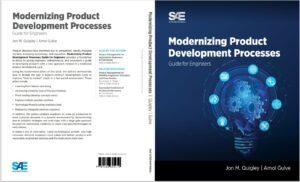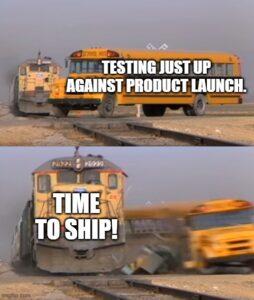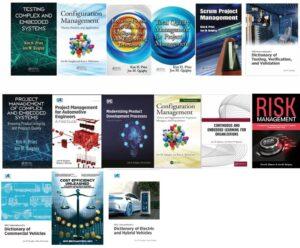Software Download Over the Air: Air: Pros, Cons,
What is Software Download Over the Air (DOTA)?
Jon M Quigley
Software download over the air (OTA) refers to the wireless delivery of software updates, patches, or new features directly to devices without the need for physical connections or manual intervention. This technology is widely used in smartphones, IoT devices, vehicles, and enterprise systems to keep software up-to-date and secure.
Navigation
It sometimes shocks me how long I’ve been in automotive product development. I recall my initial exploration of navigation systems while working at a commercial vehicle development and manufacturing company in the Pacific Northwest. I remember exploring the performance and display of these systems, without considering their long-term ramifications.
Telematics
Over time, I went on to work with another commercial vehicle developer and manufacturer, expanding my work into telemetry systems and the Human-Machine Interface (HMI). I have been part of teams that have developed intellectual property around vehicle telemetry systems. From ensuring the vehicle is only in the area of expected operation, to the ability to update software components in the vehicle.
Benefits of Software Download Over the Air (Pros)
- Convenience and Speed:
OTA updates enable users and businesses to receive the latest software improvements without needing to visit service centers or connect devices to computers. Updates can be deployed remotely and at scale, saving time and effort. - Enhanced Security:
Regular OTA updates ensure devices are protected against the latest vulnerabilities and threats. Security patches can be delivered quickly to all users, reducing the risk of cyberattacks. - Cost Savings:
Manufacturers and IT teams can update entire fleets of devices simultaneously, eliminating the need for costly in-person maintenance or recalls. - Continuous Feature Upgrades:
OTA enables the addition of new features and performance enhancements after the device is in the user’s hands, increasing product value and user satisfaction. - Uniformity and Compliance:
OTA updates help standardize software versions across all devices, ensuring compliance with regulations and simplifying troubleshooting.
Drawbacks of Software Download Over the Air (Cons)
- Network Dependence:
OTA updates require a stable internet connection. Devices in areas with poor connectivity may miss critical updates, leaving them vulnerable to security risks. - Security and Privacy Risks:
Wireless delivery can expose devices to hacking or data breaches if encryption and authentication are not robust. - Potential for Device Failure:
Inadequate testing or incompatibility can result in failed updates, sometimes “bricking” devices, and causing widespread disruption. - Lack of User Control:
Automatic updates may occur without user consent or awareness, leading to unexpected changes or issues. If you have a cable TV provider, you will likely have experienced this new feature, or new menu structure. - Quality Risks from Poor Product Development:
If a company’s product development process is not mature or robust, OTA enables the fast delivery of poor-quality software quickly and at scale. This means bugs, security flaws, or incomplete features can reach all users instantly, amplifying the impact of development shortcomings.
| Pros | Cons |
| Fast, remote updates at scale. | Requires a reliable internet connection |
| Enhanced security with rapid patching | Risk of hacking or data breaches |
| Cost and time savings | Potential to brick devices if updates fail |
| Continuous feature delivery | Lack of user control over updates |
| Uniformity and compliance | Poor development can spread low-quality software quickly |
DOTA Limits
The problem with DOTA is that it gives us the illusion of working with a net for the product development. For example, we have insufficiently tested the product and launched it. If we identify issues in the software, we can easily create an updated version and quickly deliver it to the component, or in this case, the vehicle. We often find ourselves quickly releasing multiple iterations of flawed software due to insufficient testing. If we have not mastered our product development processes, whatever that means in the context of your organization, we should expect a release train of buggy software.
There are worse things than a project being blindsided by the verification results. That is when the customer is surprised by the poor quality.
We are fortunate in that most releases, based on experience, are of small increments to maintain the pace of frequent releases. This still requires a philosophy of regression testing, and strong product development practices appropriate for the circumstances.
Conclusion
Software download over the air is a powerful tool for keeping devices secure, up-to-date, and feature-rich. However, it also introduces risks, especially if a company’s product development approach cannot ensure high-quality releases. Businesses must strike a balance between the convenience and efficiency of OTA and rigorous testing and robust security to maximize benefits and minimize drawbacks. Poor testing and verification, uncoordinated system changes, errant configurations, and ineffective requirements management will be among the factors that contribute to this undesirable and costly outcome.
For more information, contact us:
The Value Transformation LLC store.
Follow us on social media at:
Amazon Author Central https://www.amazon.com/-/e/B002A56N5E
Follow us on LinkedIn: https://www.linkedin.com/in/jonmquigley/
https://www.linkedin.com/company/value-transformation-llc
Follow us on Google Scholar: https://scholar.google.com/citations?user=dAApL1kAAAAJ






